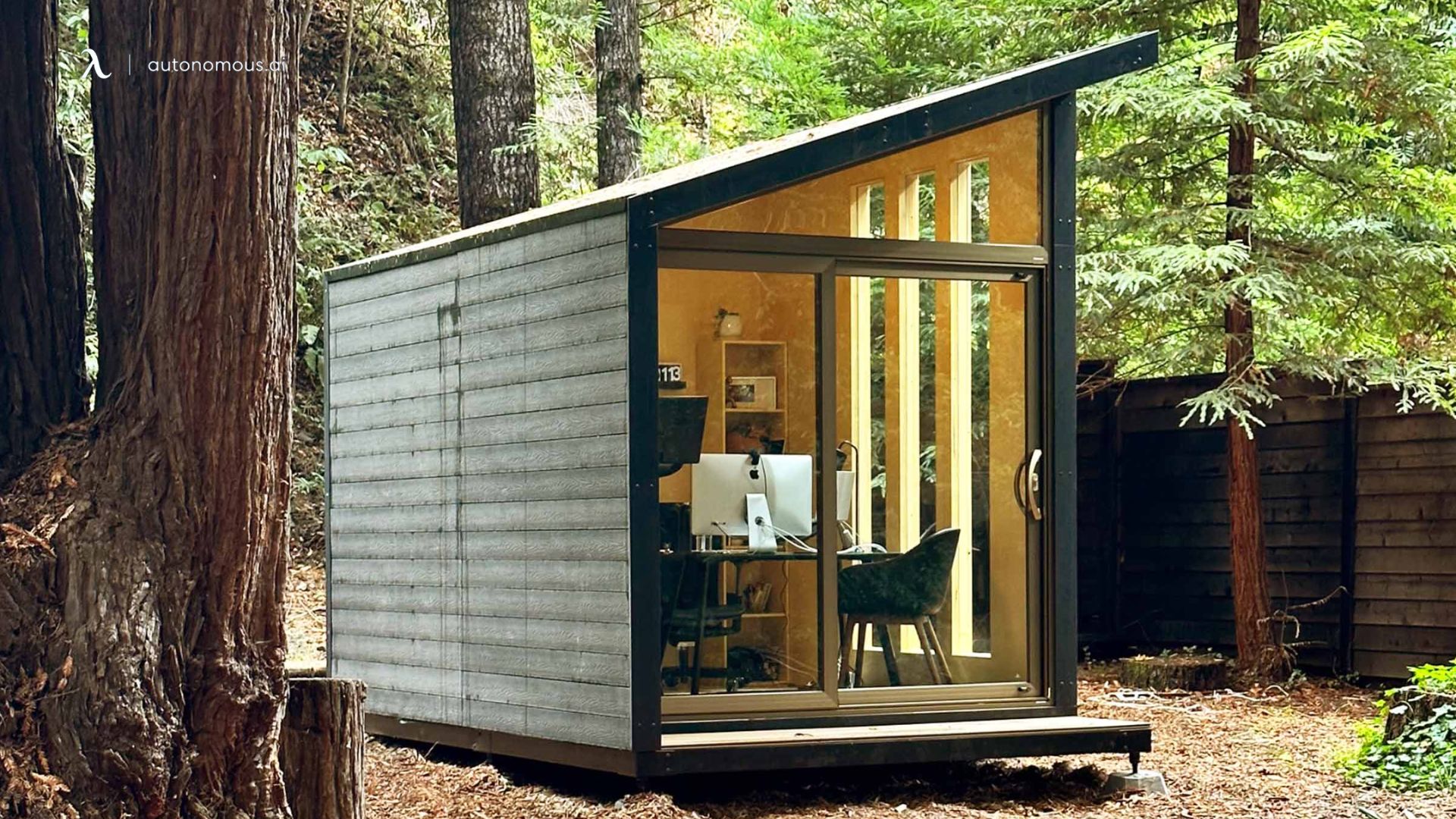
The Ultimate Guide to Creating an Insulated Garden Office Pod
Table of Contents
Creating an insulated garden office pod can make working from home much more comfortable. Insulation keeps your pod cozy in winter and cool in summer, so you can use it all year round.
It's a simple way to upgrade your outdoor office shed and make it a perfect spot for work, hobbies, or just relaxing. By insulating your garden office pod, you'll enjoy a better environment without worrying about the weather.
Why Insulate a Garden Office Pod?
Insulating your garden office pod brings many benefits. First, it helps control the temperature. This means you'll stay warm in winter and cool in summer, making your office comfortable all year.
Another big benefit is protection from damp, mold, and condensation. Insulation keeps moisture out, so you won't have to deal with moldy walls or furniture. Now, this makes your garden-insulated office a healthier place to work or relax.
Also, insulation adds security and durability. Thicker walls make it more difficult for intruders to break in, and the structure will last longer. This means your studio office will be a safe and reliable space for years to come.
Overall, an insulated garden office pod is a smart investment. It creates a better environment for work or hobbies and keeps your space in good shape.
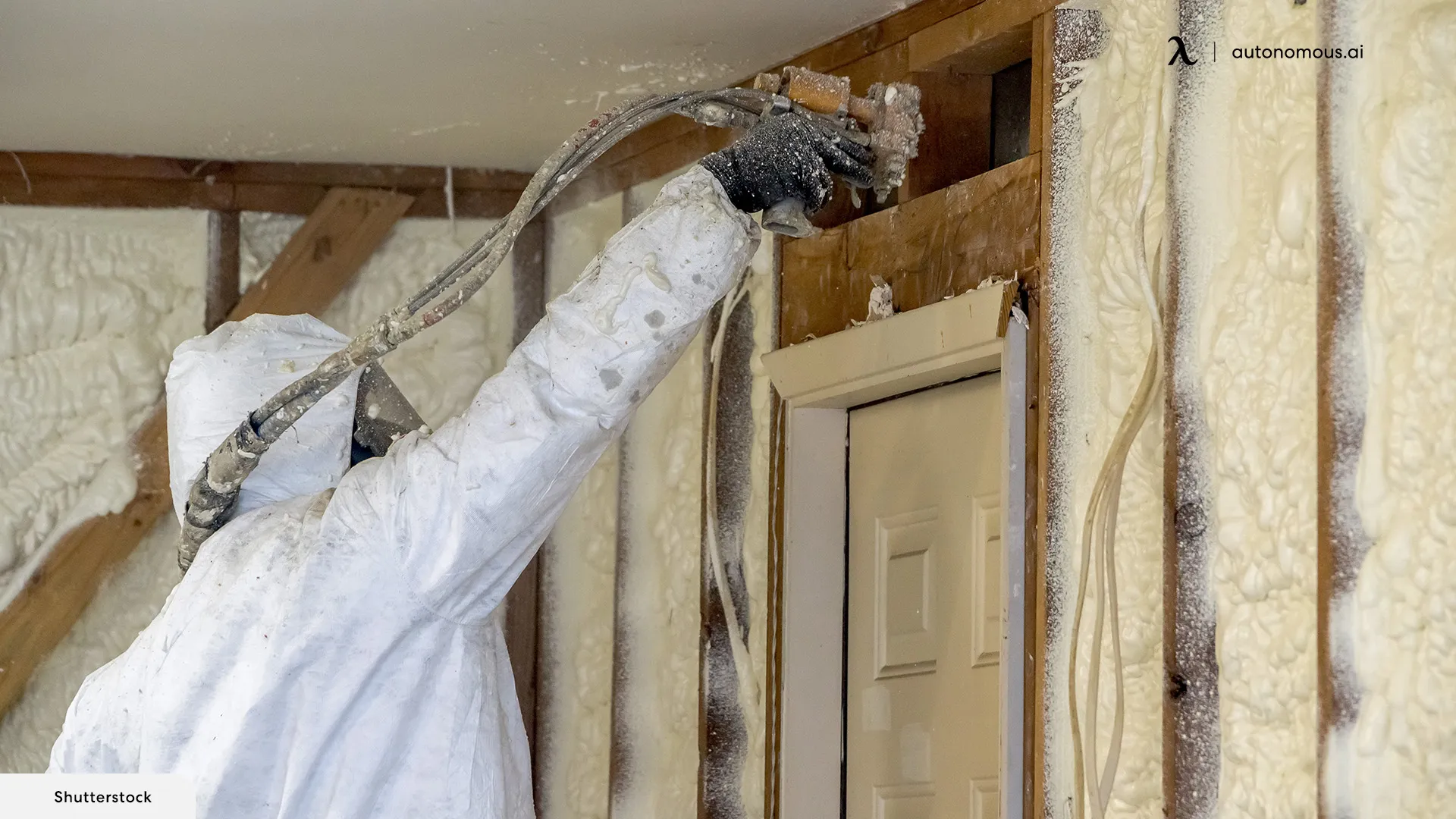
Types of Insulation for a Garden Office Pod
Choosing the right insulation for your garden office pod is important. Different materials offer distinct benefits, so it's good to know what each type can do for your space. Here are some common options to consider.
Insulation Type | Cost | Ease of Installation | Thermal Performance | Moisture Resistance | Soundproofing | Durability |
Spray Foam | High | Requires professional installation | Excellent – fills all gaps | High – keeps out drafts and moisture | Moderate | Long-lasting |
Fiberglass | Low | DIY-friendly but requires protective gear | Good – decent R-value | Low – needs proper sealing | Low | Moderate |
Foam Board | Moderate | DIY-friendly – easy to cut and fit | Excellent – high R-values | High – helps prevent moisture issues | Low | Can degrade over time |
Mineral Wool | High | Harder to install due to weight | Very good – high R-values | Moderate – performs well in various conditions | Excellent – great for soundproofing | Very durable |
Each of these insulation types has its pros and cons, so think about what's most important for your prefab ADU. Whether it's cost, ease of installation, or specific benefits such as soundproofing or fire resistance, there's an insulation material that will fit your needs perfectly.
What's the Best Insulation for a Garden Office Pod?
Choosing the best insulation for your garden office pod depends on a few key factors. First, think about your budget. Spray foam insulation is the most expensive, while fiberglass is cheaper. Foam board and mineral wool fall in between, offering a balance of cost and performance.
Next, consider thermal performance. This is measured by R-values, which show how well the insulation keeps heat in or out. Higher R-values mean better insulation. Spray foam and foam boards usually have the highest R-values, making them very effective for keeping your small garden office pod insulated.
Ease of installation is another factor. Fiberglass and foam board are easier to install yourself, while spray foam often needs a professional. If you're planning a DIY project for your backyard studio kit, this might be important.
Finally, think about the environmental impact. Mineral wool and fiberglass are more eco-friendly compared to foam boards and spray foam. If being green is important to you, these options are worth considering.
Balancing these factors will help you pick the best insulation for your garden office pod. Whether you're worried about the insulated garden office cost or looking for easy installation, there's an option that fits your needs perfectly.
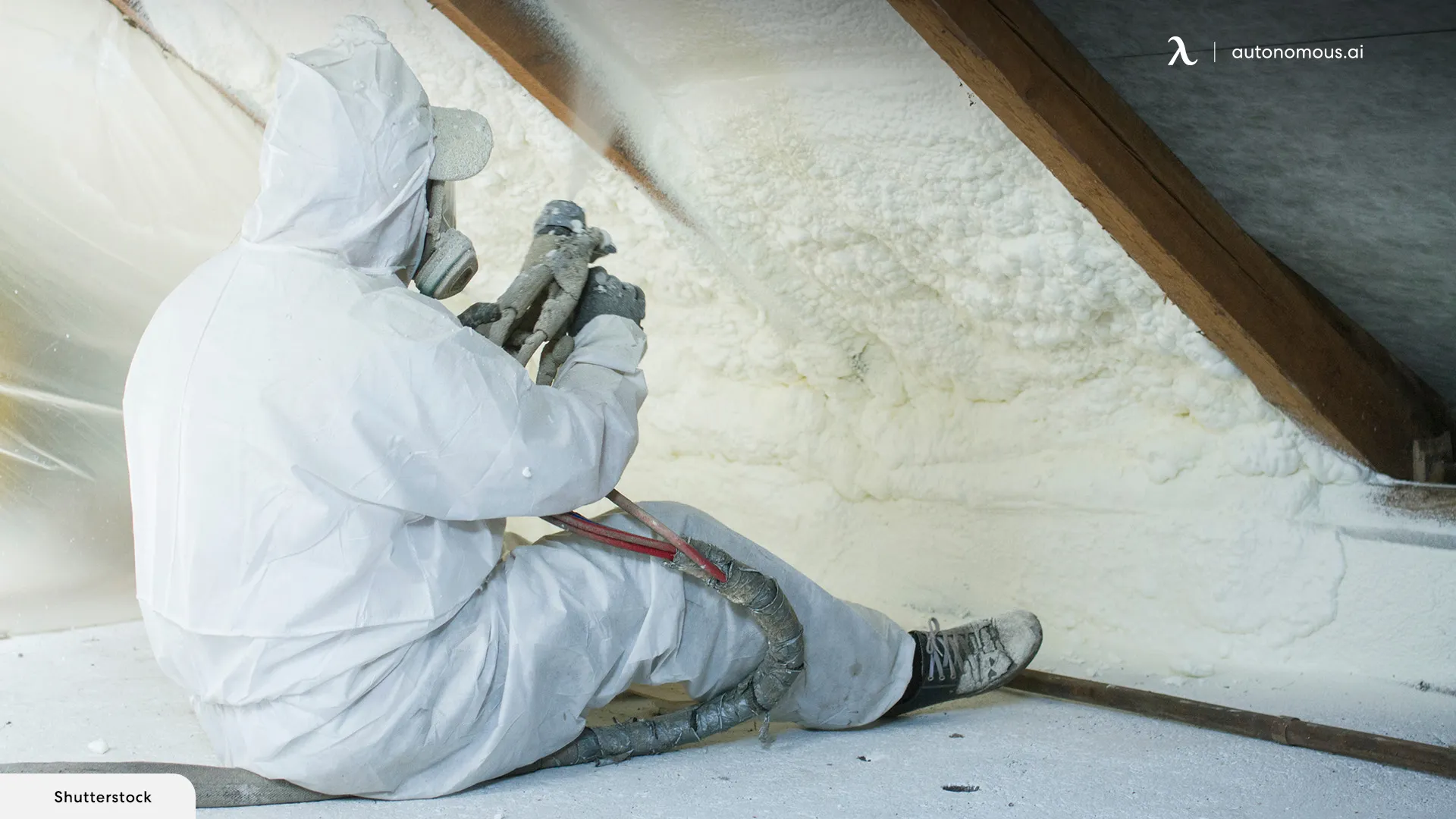
How to Install Insulation in a Garden Office Pod
Installing insulation in your garden office pod is a straightforward process. Here's a simple step-by-step process to help you out.
1. Preparation and Safety Measures
Before you start, make sure that you have all the necessary tools and materials. You'll need insulation material (spray foam, fiberglass, foam board, or mineral wool), a utility knife, a staple gun, and protective gear such as gloves, goggles, and a mask. Safety first - insulation materials can be irritating to the skin and lungs.
2. Installing Insulation in Walls, Roof, and Floor
Getting your walls, roof, and floor insulated properly is crucial for maintaining a comfortable temperature in your garden office pod.
Walls
Begin by measuring the spaces between the wall studs. Cut the insulation material to fit between the studs perfectly. If you're using spray foam, simply spray it into the spaces and let it expand.
For other types, place the insulation in the gaps and secure it with a staple gun. This will ensure your garden-insulated office stays comfortable.
Roof
The process for the roof is similar to the walls. Measure the spaces between the roof joists and cut the insulation accordingly.
Lastly, secure it in place with staples or adhesive, depending on the material. Properly insulated roofs help maintain temperature control in your budget prefab office shed.
Floor
If your pod has a raised floor, install insulation between the floor joists. However, if it sits directly on a concrete slab, you might need to raise the floor slightly to add insulation. Now, this can add to the insulated garden room cost, but it's worth it for the comfort it provides.
3. Using Breathable Membranes to Prevent Moisture Ingress
After installing the insulation, cover it with a breathable membrane. This layer helps prevent moisture from getting trapped inside the walls, which can cause mold and dampness. Staple or glue the membrane over the insulation before putting up any interior wall coverings.
By following these steps, you can ensure your garden office pod is well-insulated and ready for year-round use. If you're looking to create a cozy workspace in your garden, proper insulation is key to comfort and durability.
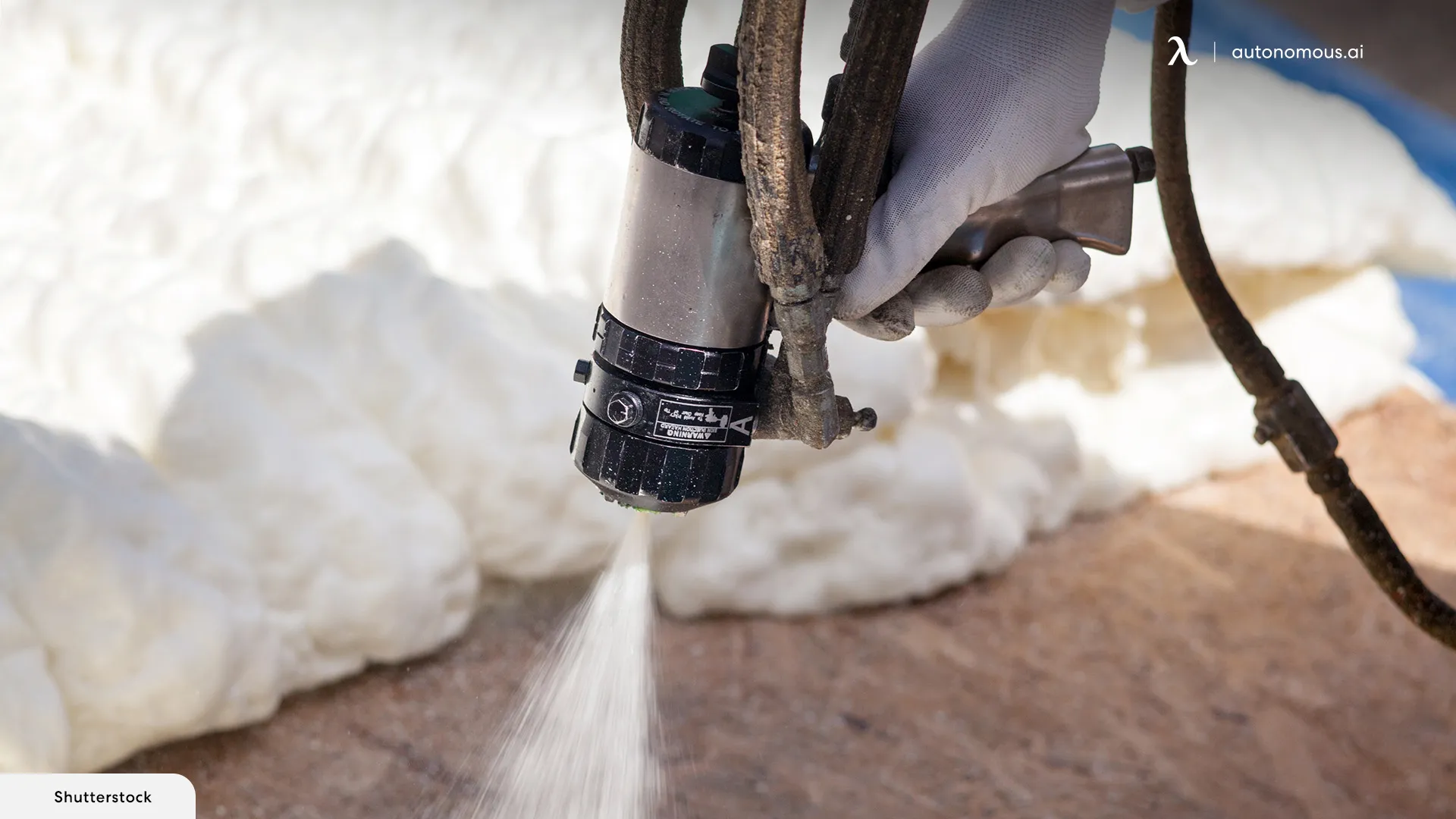
Covering the Walls of a Garden Office Pod
Once you've insulated your garden office pod, it's time to cover the interior walls. Here are a few options to consider:
Wall Covering | Cost | Ease of Installation | Durability | Moisture Resistance | Customizability |
Plasterboard | Low | Easy – simple to cut and fit, great for DIY | Prone to damage from impacts | Low – susceptible to moisture | Can be painted but not very strong for mounting items |
Plywood | Moderate | Easy – smooth finish, easy to install | Durable – withstands wear and tear | Moderate – better than plasterboard but requires sealing in damp areas | Highly customizable – can be painted, stained, or finished |
Hardboard | Low | Easy – solid surface for painting or finishing | More durable than plasterboard but still weaker than plywood | Low – can suffer moisture damage without proper sealing | Can be painted or finished, but less versatile than plywood |
Choosing the right material for your insulated garden office pod depends on your budget, the level of durability you need, and your aesthetic preferences. Each option has its advantages and disadvantages, so consider what works best for your specific situation.
Best Insulated Garden Office Pods from Autonomous
Autonomous offers a range of insulated garden office pods that are perfect for creating a comfortable, functional workspace in your backyard. Here are three top options to consider.
1. WorkPod
The WorkPod is designed for those who need a private and productive workspace at home. With a floor area of 98 square feet and seven-layer walls, it provides excellent insulation and soundproofing.
This work shed is easy to assemble in just three days, making it a quick solution for your home office needs. Moreover, the sturdy construction ensures durability, and the sleek design adds a modern touch to your backyard.
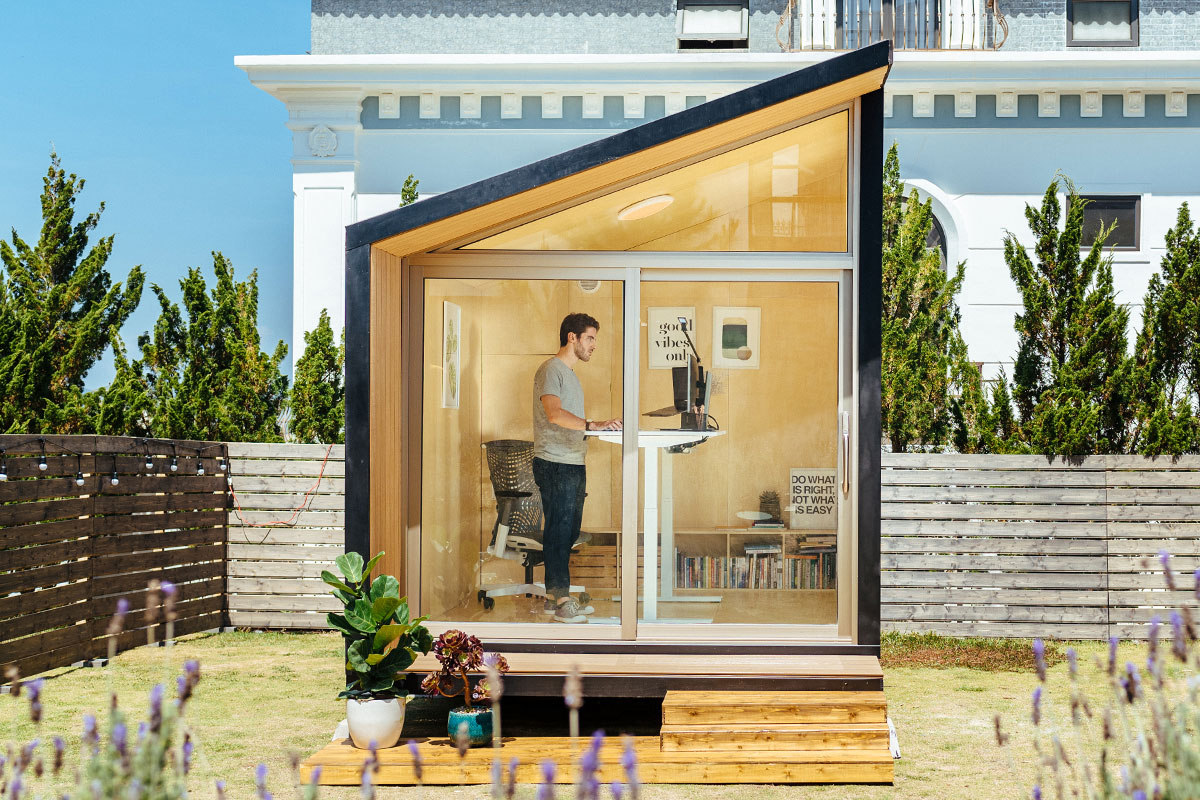
WorkPod
| Overall size | 8.5’W x 12’L x 11’H |
| Floorspace | 102 square feet |
| Ceiling height | 6.8’ to 9.3’ |
| Weight capacity | 2.9 tons |
| Door & Window dimensions, material (include glass) | Main door: 7.5’W x 6.8'H 3 windows: 1.1’W x 7.9’H Window material: Wooden frame, 5/16” tempered glass, composite wood cover Door material: Anodized aluminum frame, 5/16” tempered glass |
| Siding, roof, floor & balcony material | Siding: Plywood 1/2”, wooden frame, honeycomb paper, plywood 3/8”, bitume, housewrap, vinyl siding Roof: Roof shingles Floor: Plywood Balcony: Composite wood |
| Electrical devices | 1 RCB (Residual current breaker) 3 Wall outlet (Universal wall sockets) 1 Ceiling light switch 1 Ceiling light 1 Ventilator switch 1 Ventilator 66ft power cable with 2 connectors |
| Power input | Maximum voltage: 110V AC (US standard) Maximum current: 25A Maximum power dissipation: 2750W |
| Interior furniture | Unfurnished option: 1 Bookshelf, 1 Electrical Cabinet Furnished option: 1 SmartDesk Connect, 1 ErgoChair Ultra, 1 Monitor Arm, 1 Cable Tray, 1 Filing Cabinet, 1 Anti-Fatigue Mat, 1 Bookshelf, 1 Electrical Cabinet |
| Compatible with | Portable air conditioner: A/C units with dimensions smaller than 22” L x 20” W x 88” H and a 5.9” vent hole diameter will fit well. Heater: A small personal heater is more than sufficient. |
2. WorkPod Solar
For those who prioritize sustainability, the WorkPod Solar takes energy efficiency to the next level. It includes all the premium features of the WorkPod but comes with a solar panel system to power your workspace. This eco-friendly design helps reduce electricity costs while maintaining a comfortable, well-insulated interior.
- Solar panels for off-grid power
- Soundproof and thermal insulation for all-weather use
- Smart design for natural light and ventilation
Best for: Eco-conscious remote workers who want a self-sufficient outdoor office.

WorkPod Solar
| Solar panel | System size: 70.7" x 138.5" x 4.7"~5.5" Number of solar panels: 3pcs Solar panel size: 67.8" × 44.6" × 1.18" Solar panel weight: 46.7lbs Solar Cell: 108pcs Maximum Rating Power: 430W Module Efficiency: 0.22 Operating Temperature: −40 °F to +185 °F |
| Inverter | Inverter size: 17.9" x 13.8" x 5.1" Inverter weight: 25.4lbs Maximum Rating Power: 3000W Maximum Efficiency: 0.93 AC output: 120V Output frequency: 50/60Hz Operating Temperature: 32 °F to +132 °F |
| Battery Cabinet | Battery cabinet size: 15.8" x 23.7" x 21.7" Number of Battery: 2pcs Battery size (1pc): 5.6" x 18.5" x 17.2" Battery weight (1pc): 99lbs Battery capacity: 10.2kWh Voltage: 48V Cell type: LiFePo4 Internal resistance: ≤ 40mΩ Operating Temperature: −4 °F to +140 °F |
| Dimension | Overall size: 8.5’W x 12’L x 11’H Gross floor area - GFA (Including external walls): 102 square feet Ceiling height: 6.8’ to 9.3’ Weight capacity: 2.9 tons |
| Door & Window dimensions, material (include glass) | Main door: 7.5’W x 6.8'H 3 Windows: 1.1’W x 7.9’H Window material: wooden frame, 5/16” tempered glass, composite wood cover Door material: anodized aluminum frame, 5/16” tempered glass |
| Siding, roof, floor & balcony material | Siding: plywood 1/2”, wooden frame, honeycomb paper, plywood 3/8”, bitume, housewrap, vinyl siding Roof: roof shingles Floor: plywood Balcony: composite wood |
| Electrical devices | 1 RCB (Residual current breaker) 3 (Universal wall sockets) Wall outlet 1 Ceiling light switch 1 Ceiling light 1 Ventilator switch 1 Ventilator 66ft power cable with 2 connectors |
| Power input | Maximum voltage: 110V AC (US standard) Maximum current: 25A Maximum power dissipation: 2750W |
| Interior furniture | Unfurnished option: 1 Bookshelf 1 Electrical Cabinet Furnished option: 1 SmartDesk 5 1 ErgoChair Ultra 2 1 Monitor Arm 1 Cable Tray 1 Filing Cabinet 1 Anti-Fatigue Mat 1 Bookshelf 1 Electrical Cabinet |
| Compatible with | Dreo Portable Air Conditioner: The best choice for WorkPod with: 12000 BTU fast cooling 16 feet long-range cooling 35-80° wide-angle auto swing 65-85°F cool 30%-80% humidity setting 4 levels of fan 46 dB quiet working Drainage-free in cool mode 3-in-1 mode with cool, fan, and dehumidifier Large LED display Touchpad/APP/Voice/Remote control Works with Alexa & Google Assistant White color Heater: A small personal heater is more than sufficient. |
3. WorkPod Versatile
The WorkPod Versatile offers more than just an office. It's perfect for a home studio, gaming space, or even a guest room. This insulated studio shed comes with a closet, bookshelf, TV stand, desk, and a convertible sofa bed, providing everything you need for various uses.
Furthermore, its vinyl siding and eco-friendly honeycomb paper insulation ensure it remains comfortable in any season. The quick assembly and modern design make it a standout addition to any garden.
/https://storage.googleapis.com/s3-autonomous-upgrade-3/production/ecm/240412/StudioPod-2.jpg)
WorkPod Versatile
| Overall size | 8’4”W x 12’6”L x 9’10”H |
| Floorspace | 105 square feet |
| Ceiling height | 7’3” |
| Weight capacity | 2.9 tons |
| Pedestal | 18”W x 43”L x 7”H |
| Door & Window dimensions, material (include glass) | Main door: 39”W x 89”H Large window: 59”W x 81”H Small window: 39”W x 39”H Window & door material: Powder coated aluminum, 5/16” tempered glass |
| Siding, roof, floor & balcony material | Siding: Plywood 1/2”, steel frame, honeycomb paper, plywood 3/8”, bitume, housewrap, vinyl siding Roof: Roof shingles Floor: Plywood Pedestal: Steel frame & wood plastic composite |
| Electrical devices | 1 RCB (Residual current breaker) |
| Power input | Maximum voltage: 110V AC (US standard) Maximum current: 25A Maximum power dissipation: 2750W |
| Furniture (optional) | Cabinet, Desk, Small & Big Bookshelf, TV Shelf, Foldable Sofa Table & Electrical Cabinet* (*Electrical Cabinet always included) |
4. WorkPod Versatile Solar
Need more than just an office? The WorkPod Versatile is designed for flexibility, functioning as an office, guest room, or even a creative studio. It has high-quality insulation to keep the space comfortable all year, along with ample room for furniture and customization.
- Larger footprint for a multi-purpose setup
- Thick insulated walls for sound and temperature control
- Built-in smart lighting and power outlets
Best for: Those who want an insulated backyard office with extra space for multiple uses.
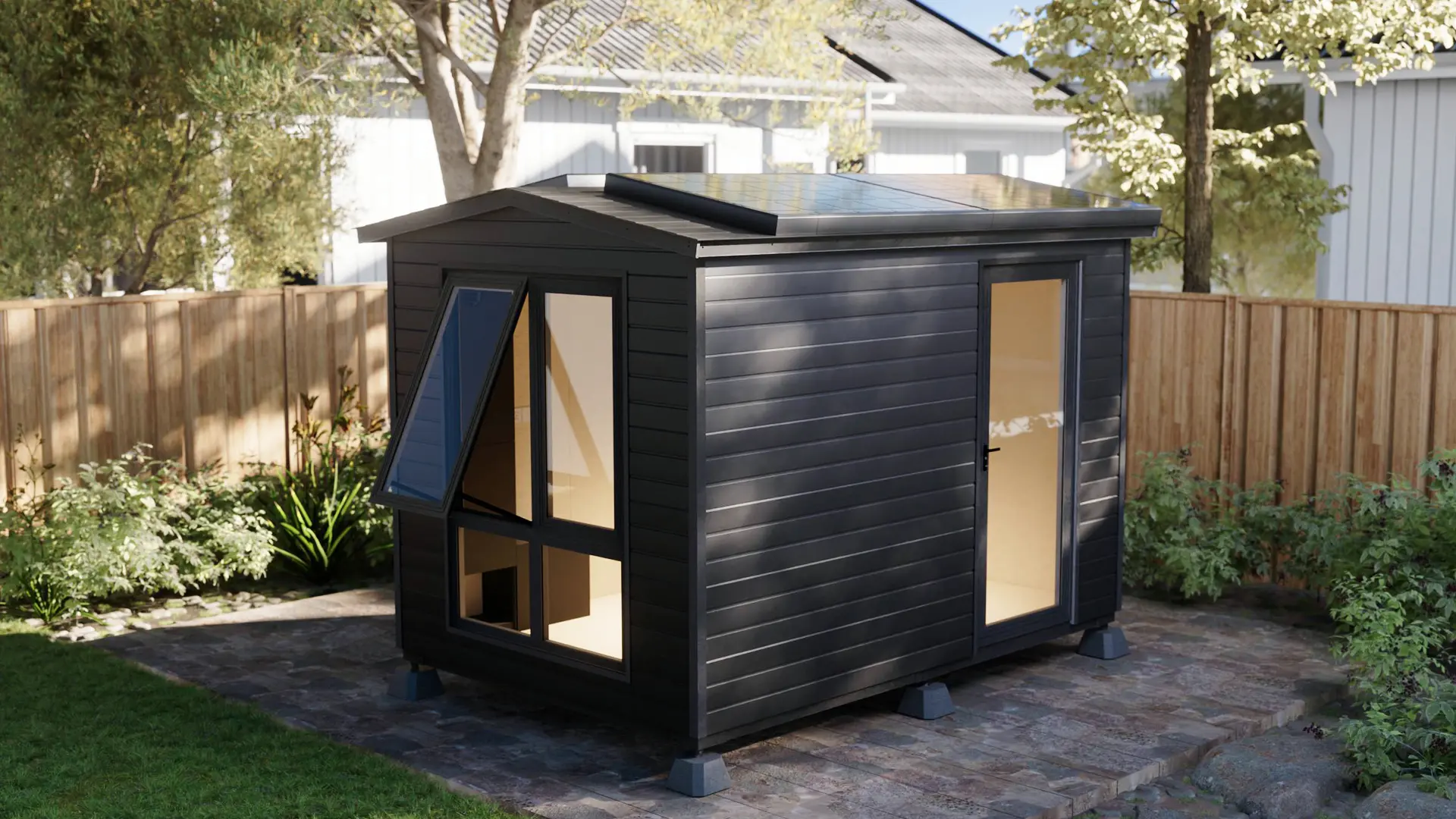
WorkPod Versatile Solar
| Solar system | Battery capacity: 10.2 kWh Total solar panel power output: 1840W Maximum output power: 3000W Usage Time: Without battery: 8 hours/day (sunlight-dependent) With battery: Up to 8 hours (depending on load)" Maximum solar energy production: Up to 8 kWh/day Full battery charging time: > 6 hours (via solar panels) Warranty: 1 year Caution: Using electrical devices exceeding the maximum output power of 3000W may void the warranty. |
| Solar panel | System size: 140" x 51.2" x 3.9" (x2) Number of solar panels: 4pcs Solar panel size: 68" x 47.5" x 1.2" Solar panel weight: 51.6lbs Solar Cell: 88pcs Maximum Rating Power: 460W Module Efficiency: 0.221 Operating Temperature: −40 °F to +185 °F |
| Inverter | Inverter size: 17.9" x 13.8" x 5.1" Inverter weight: 25.4lbs Maximum Rating Power: 3000W Maximum Efficiency: 0.93 AC output: 120V Output frequency: 50/60Hz Operating Temperature: 32 °F to +132 °F |
| Battery Cabinet | Battery cabinet size: 22.6" x 13.1" x 20.8" Number of Battery: 2pcs Battery size (1pc): 5.6" x 18.5" x 17.2" Battery weight (1pc): 99lbs Battery capacity: 10.2kWh Voltage: 48V Cell type: LiFePo4 Internal resistance: ≤ 40mΩ Operating Temperature: −4 °F to +140 °F |
| Dimension | Overall size: 8.4’W x 12.5’L x 9.8’H Gross floor area - GFA (Including external walls): 105 square feet Ceiling height: 7.25’ Weight capacity: 2.9 tons Pedestal: 1.5'W x 3.6'L x 0.6'H |
| Door & Window dimensions, material (include glass) | Main door: 3.25'W x 7.4'H Large window: 4.9'W x 6.75'H Small window: 3.25'W x 3.25'H Window & door material: powder coated aluminum, 5/16” tempered glass |
| Siding, roof, floor & balcony material | Siding: plywood 1/2”, steel frame, honeycomb paper, plywood 3/8”, bitume, housewrap, vinyl siding Roof: roof shingles Floor: plywood Pedestal: steel frame & wood plastic composite |
| Electrical devices | 1 RCB (Residual current breaker) 5 Wall outlet (Universal wall sockets) 1 Ceiling light switch 4 Ceiling light 1 Ventilator switch 1 Ventilator 2 Ethernet wall port 66ft power cable with 2 connectors |
| Power input | Maximum voltage: 110V AC (US standard) Maximum current: 25A Maximum power dissipation: 2750W |
| Furniture (optional) | Cabinet, Desk, Small & Big Bookshelf, TV Shelf, Foldable Sofa Table & Electrical Cabinet* (*Electrical Cabinet always included) |
5. WorkPod mini
For those with limited space, the WorkPod mini is an affordable yet stylish option. Despite its smaller size, it doesn't compromise on quality. This insulated garden office pod is pre-wired and ready to use, making setup a breeze.
It's perfect as a small garden office pod to keep you comfortable year-round. Also, the durable materials and simple plug-and-play setup make it a practical choice for any backyard.
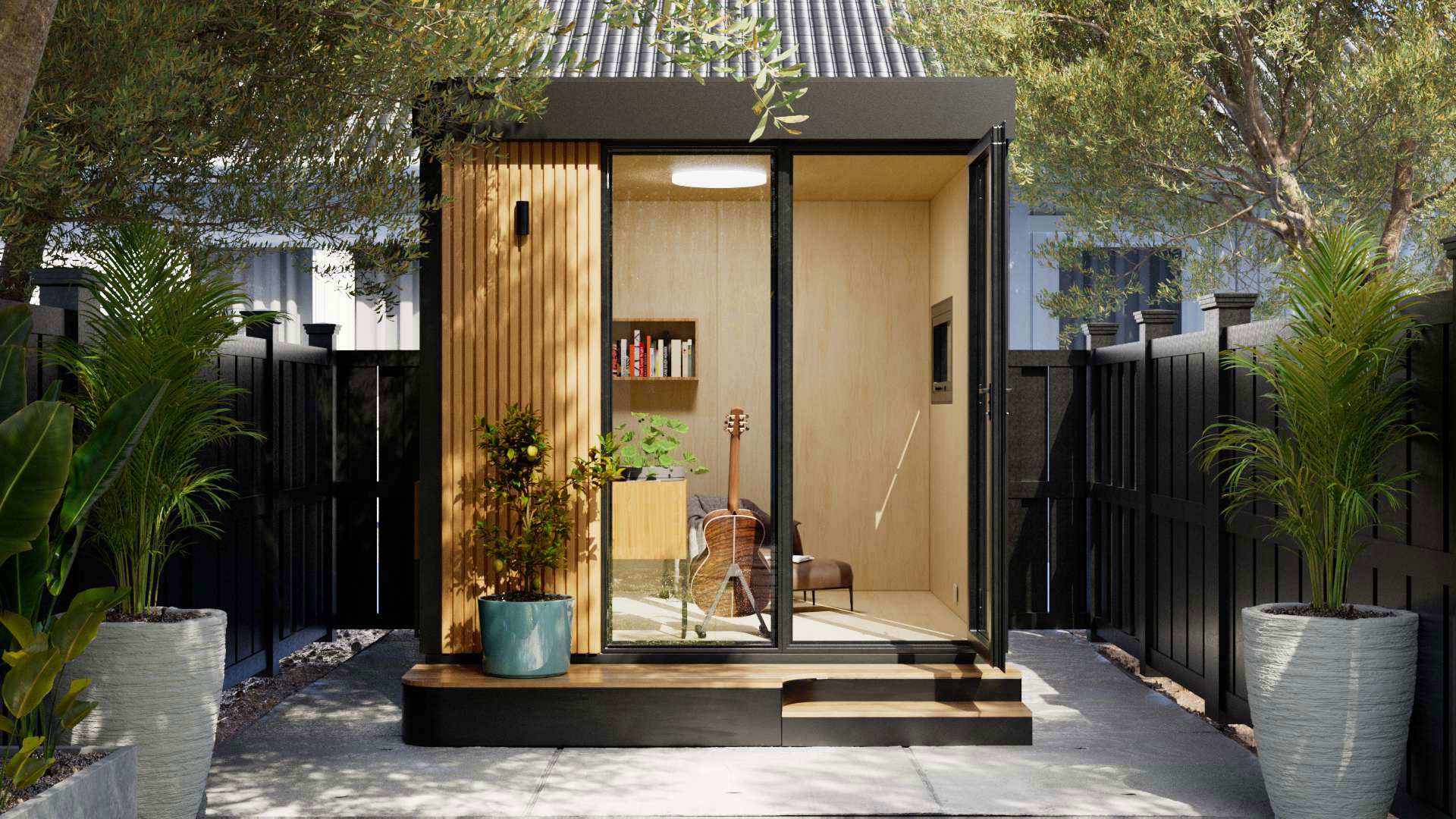
WorkPod mini
| Dimension | Overall size: 8’7"W x 9’L x 9’3"H Floorspace: 80 square feet Ceiling height: 7’3" Weight capacity: 2.3 tons (including Pod body) Pedestal: 24"W x 103"L x 9"H |
| Door & Window dimensions, material (include glass) | Main door: 37"W x 89"H (open side) & 33"W x 89"H (fixed side) Window: 43"W x 20"H Window & door material: Powder coated aluminum, 5/16" tempered glass |
| Siding, roof, floor & balcony material | Siding: Plywood 1/2" , steel frame, honeycomb paper, plywood 3/8", bitume, housewrap, vinyl siding Roof: Metal roofing Floor: Plywood Balcony & Pedestal: Steel frame & wood plastic composite |
| Electrical devices | 1 RCB (Residual current breaker) 2 Wall outlet (Universal wall sockets) 1 Ceiling light switch 1 Ceiling light 1 Wall light 1 Ethernet wall port 66ft power cable with 2 connectors |
| Power input | Maximum voltage: 110V AC (US standard) Maximum current: 25A Maximum power dissipation: 2750W |
These insulated garden office pods from Autonomous offer different features and benefits to suit various needs. Whether you need a dedicated workspace, a versatile studio, or a compact office, there's a pod that fits your requirements perfectly.
Additional Tips for Insulating a Garden Office Pod
To make sure that your garden office pod stays cozy and efficient, here are some extra tips. Regular maintenance and attention to detail can ensure your garden office pod remains a comfortable and inviting workspace year-round.
- Proper Ventilation
Good ventilation is key to avoiding dampness and mold. So, make sure that there are vents in your pod to allow air to flow. You can also use a small fan or a dehumidifier to keep the air dry, especially if you're using the space as a home pottery studio where moisture levels can be high.
- Sealing Gaps
Check for any gaps or cracks in the walls, roof, and floor. Use caulk or weather stripping to seal these gaps. This will keep the temperature stable and reduce energy costs.
- Regular Maintenance
Keep your small garden office pod insulated and effective by doing regular maintenance. Inspect the insulation every year for signs of wear or damage. Lastly, replace any worn-out sections to maintain efficiency and control the insulated garden room cost over time.
- Adding a Vapor Barrier
Consider installing a vapor barrier on the walls and floor before adding insulation. This barrier helps keep moisture out, which is crucial for long-term insulation performance.
Following these tips will help keep your garden office pod in great shape, making it a perfect, cost-effective workspace.
Key Takeaway
Insulating your garden office pod is a smart investment for both comfort and efficiency. It keeps your workspace usable year-round by maintaining a stable temperature, protecting against moisture, and enhancing durability.
Choosing an insulated garden pod ensures a cozy and practical setup, allowing you to focus and stay productive without distractions. If you're considering a DIY affordable office pod, there are budget-friendly options that still offer quality insulation. For those who prefer an indoor office pod, a well-designed space can enhance focus and productivity. If flexibility is a priority, a portable office pod provides a mobile and adaptable solution. Meanwhile, individual office pods are perfect for transforming open workspaces into private and efficient environments.
Stay connected with us!
Subscribe to our weekly updates to stay in the loop about our latest innovations and community news!
Interested in a Link Placement?
Spread the word
.svg)
.svg)


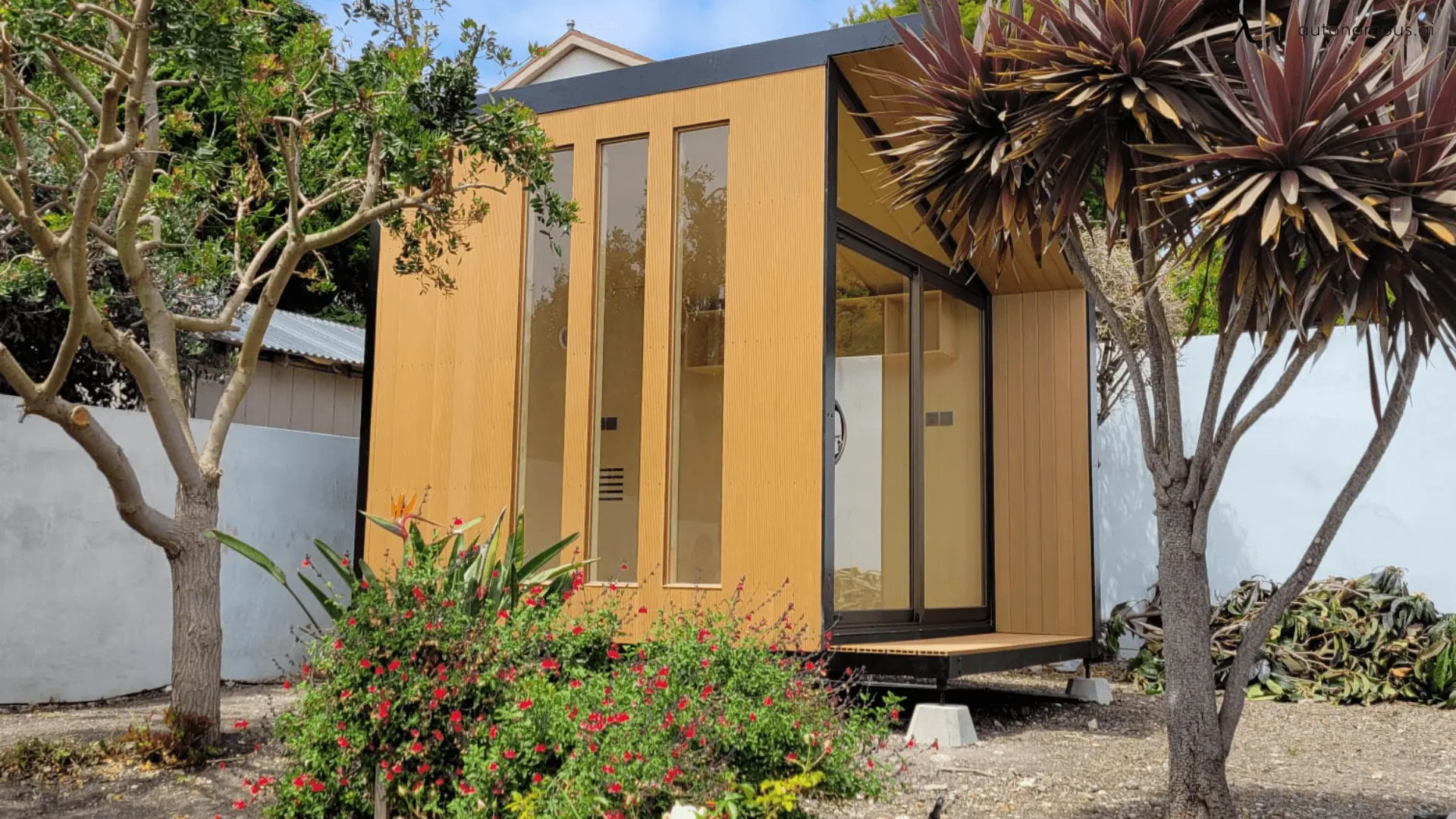
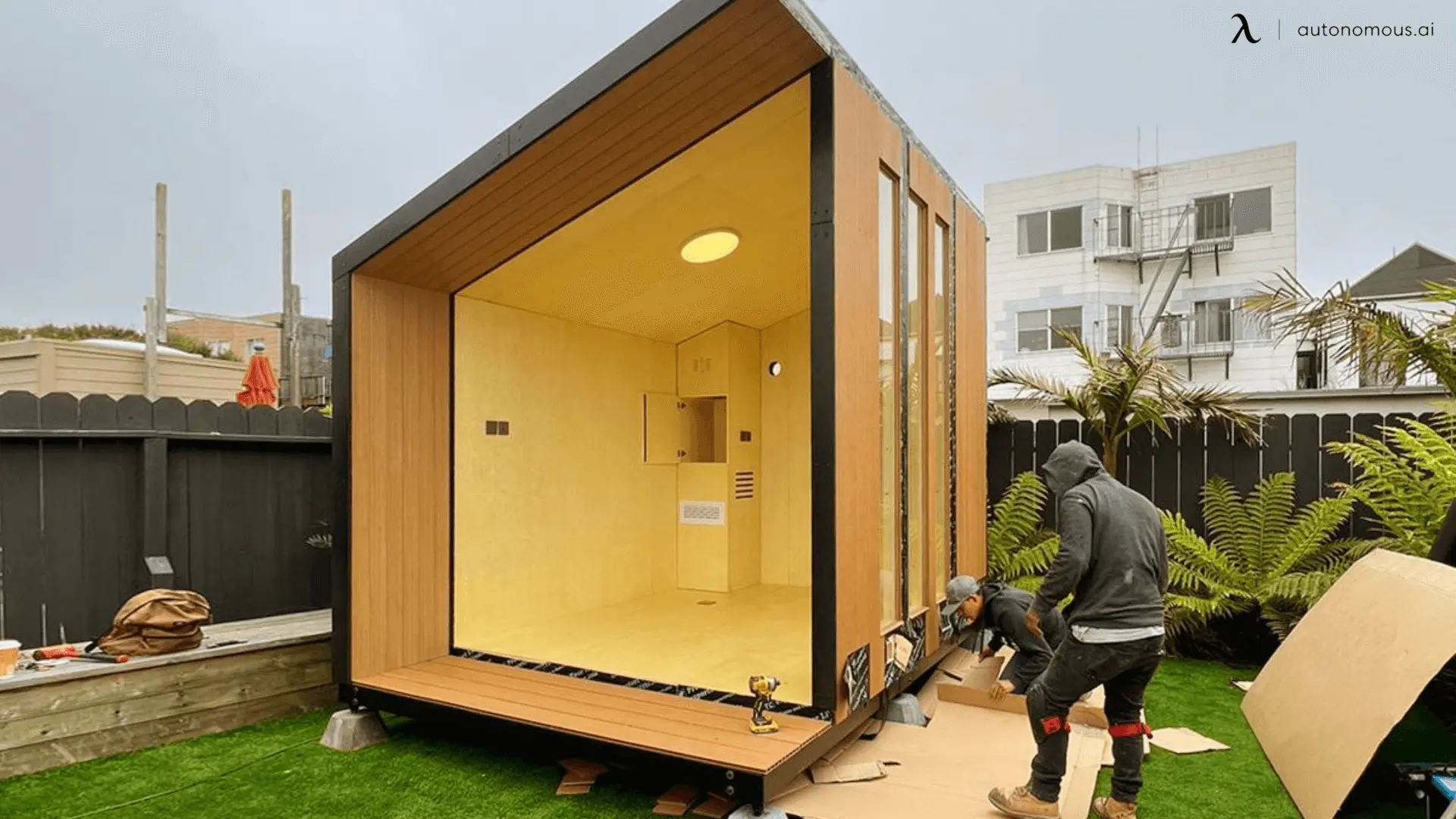
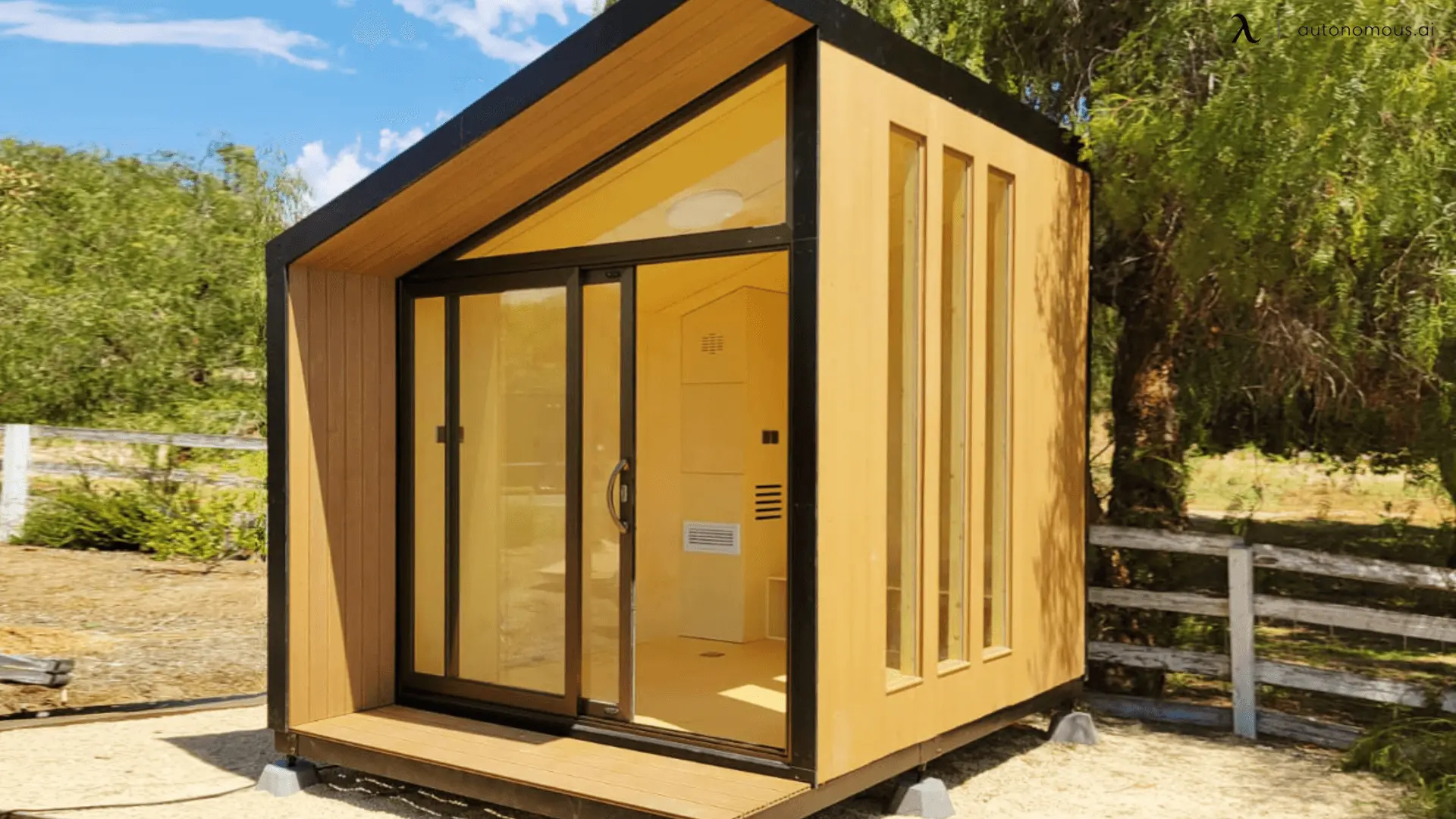
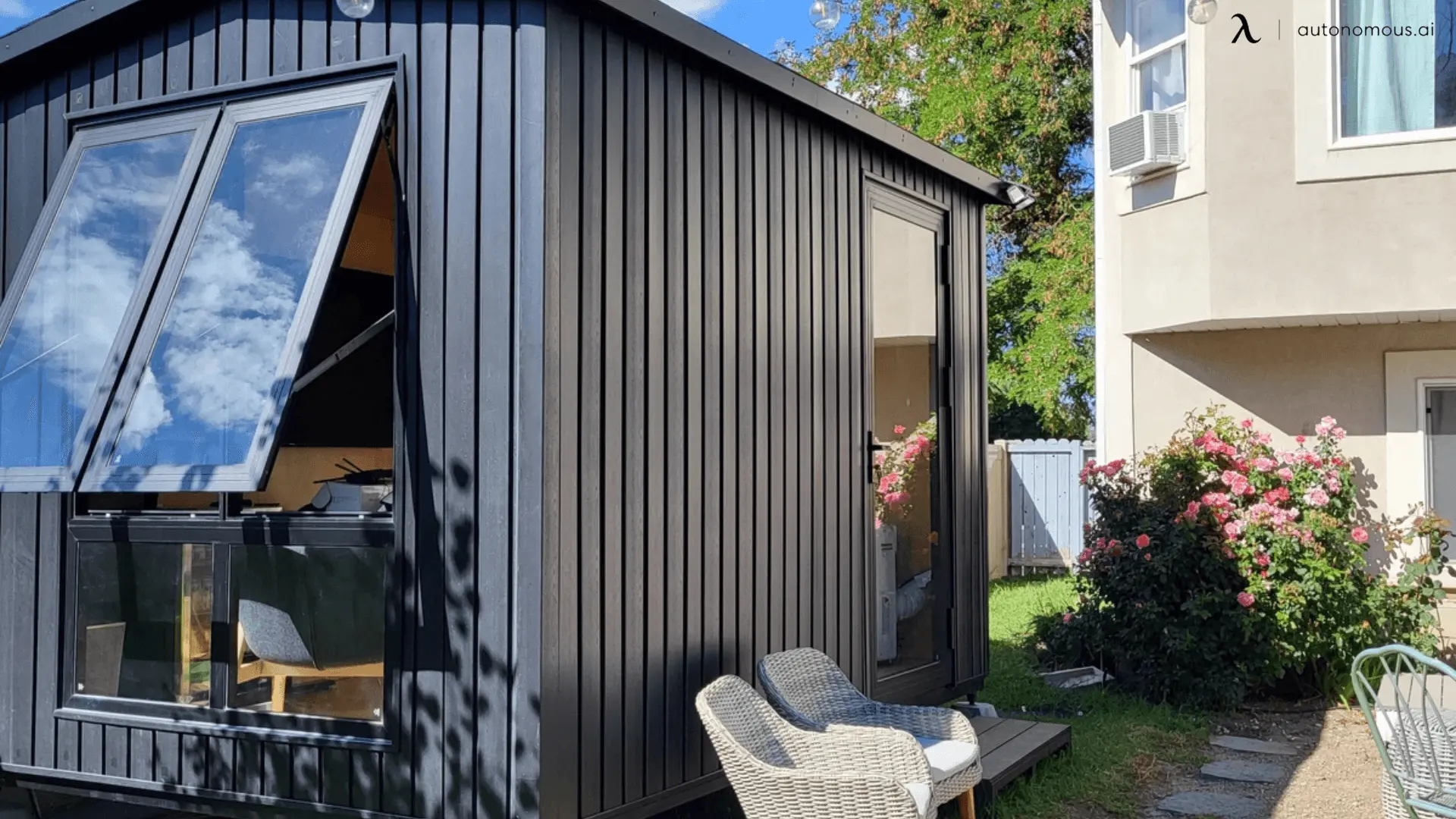
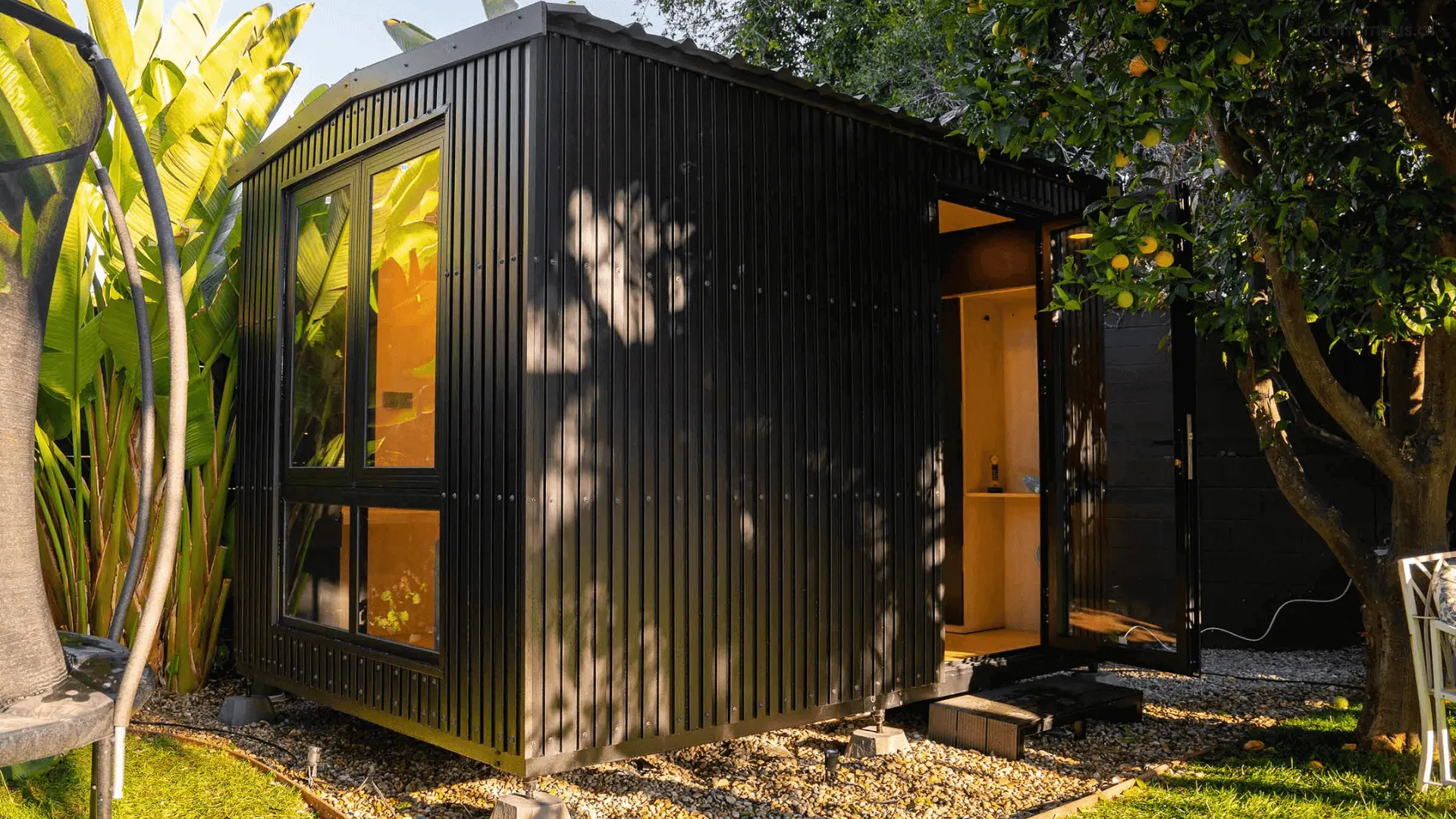
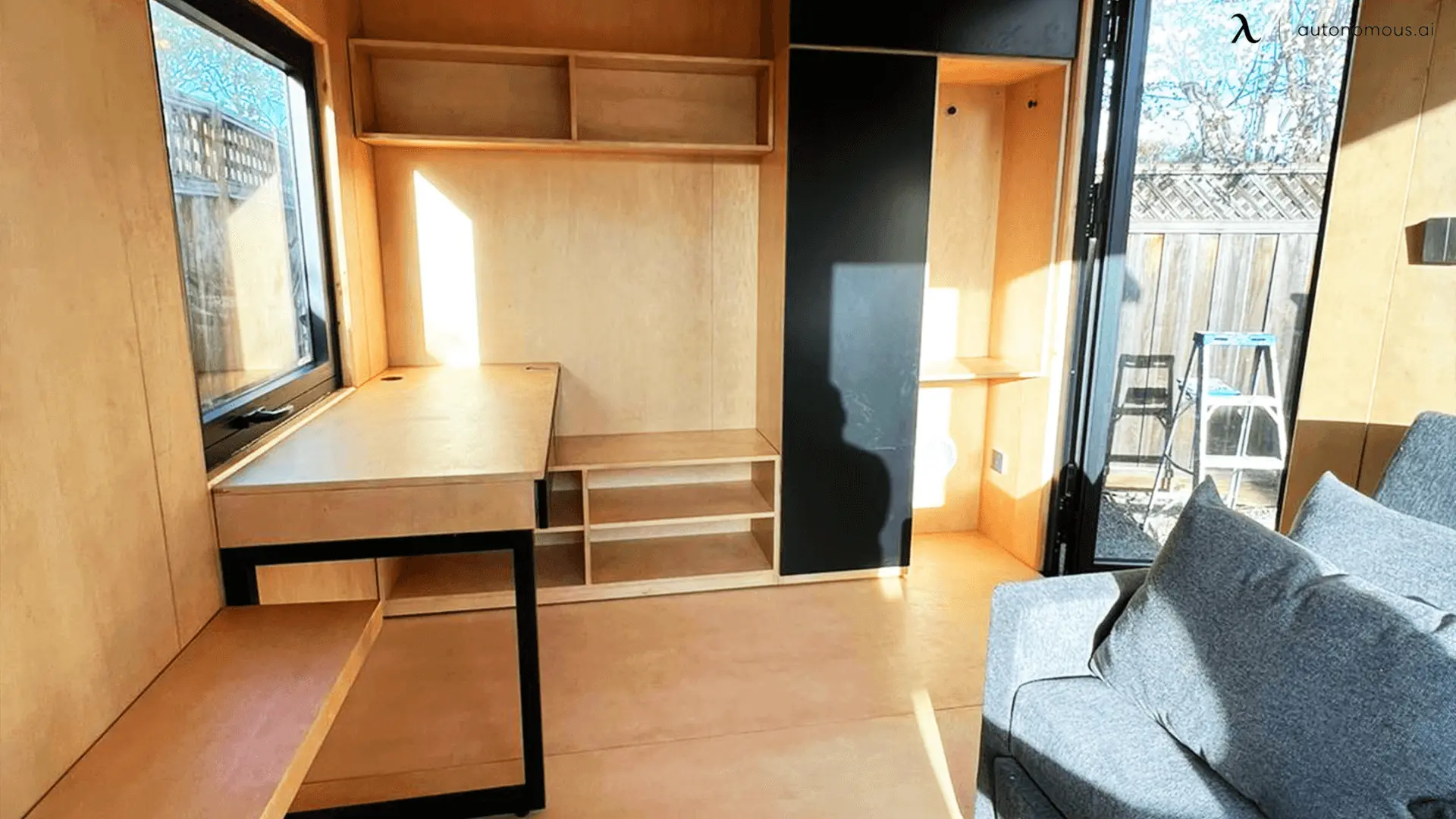
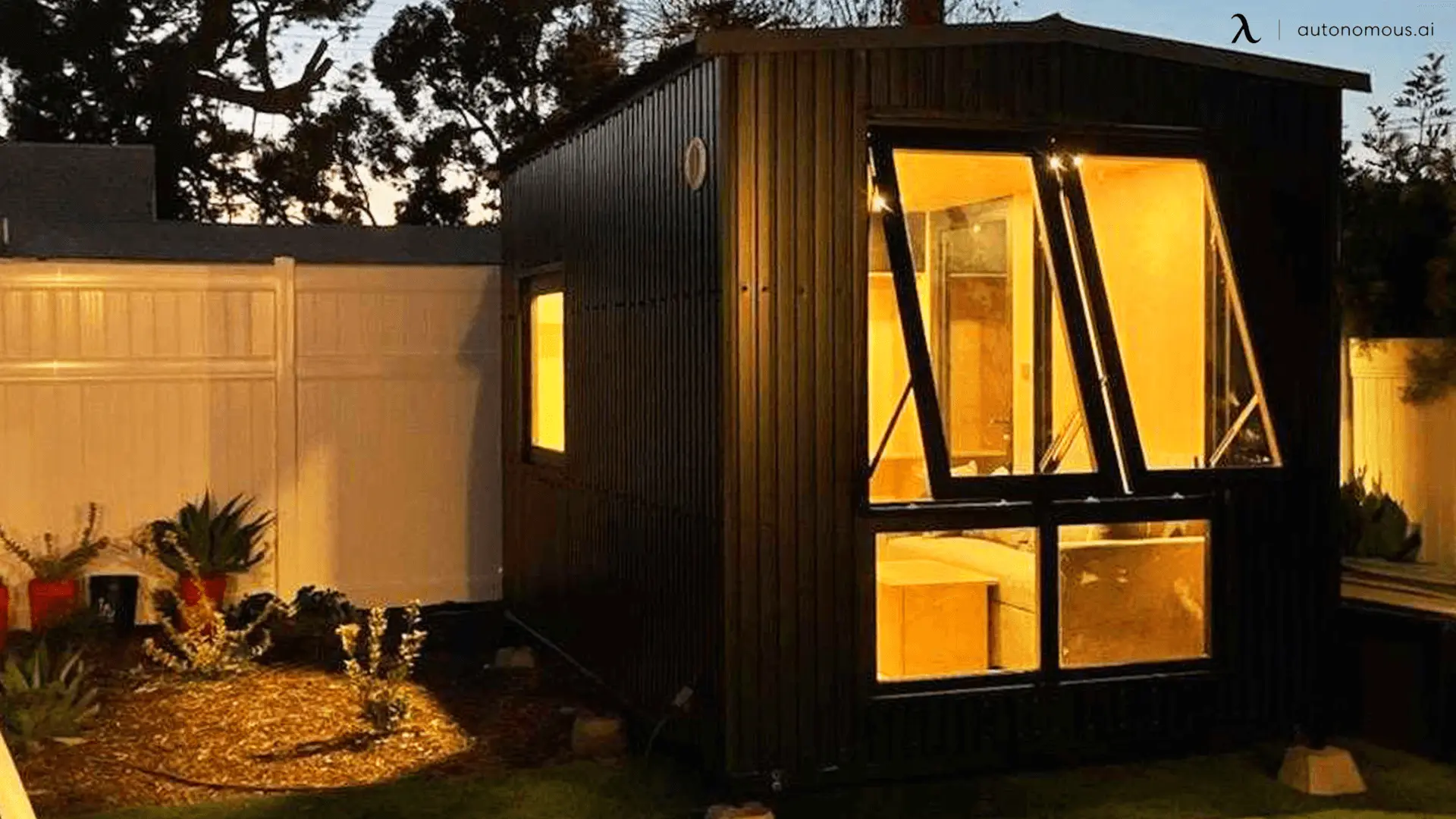
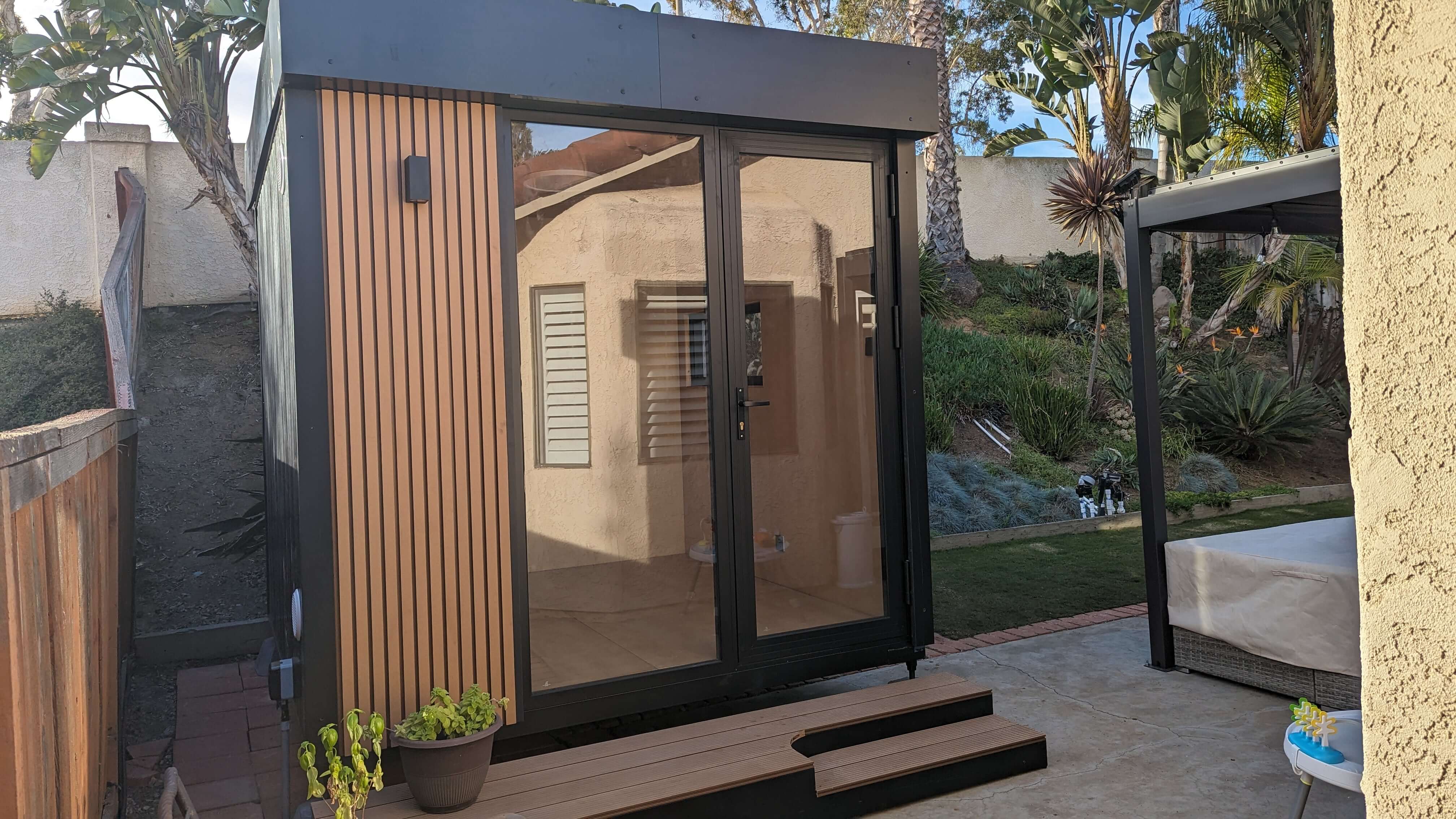
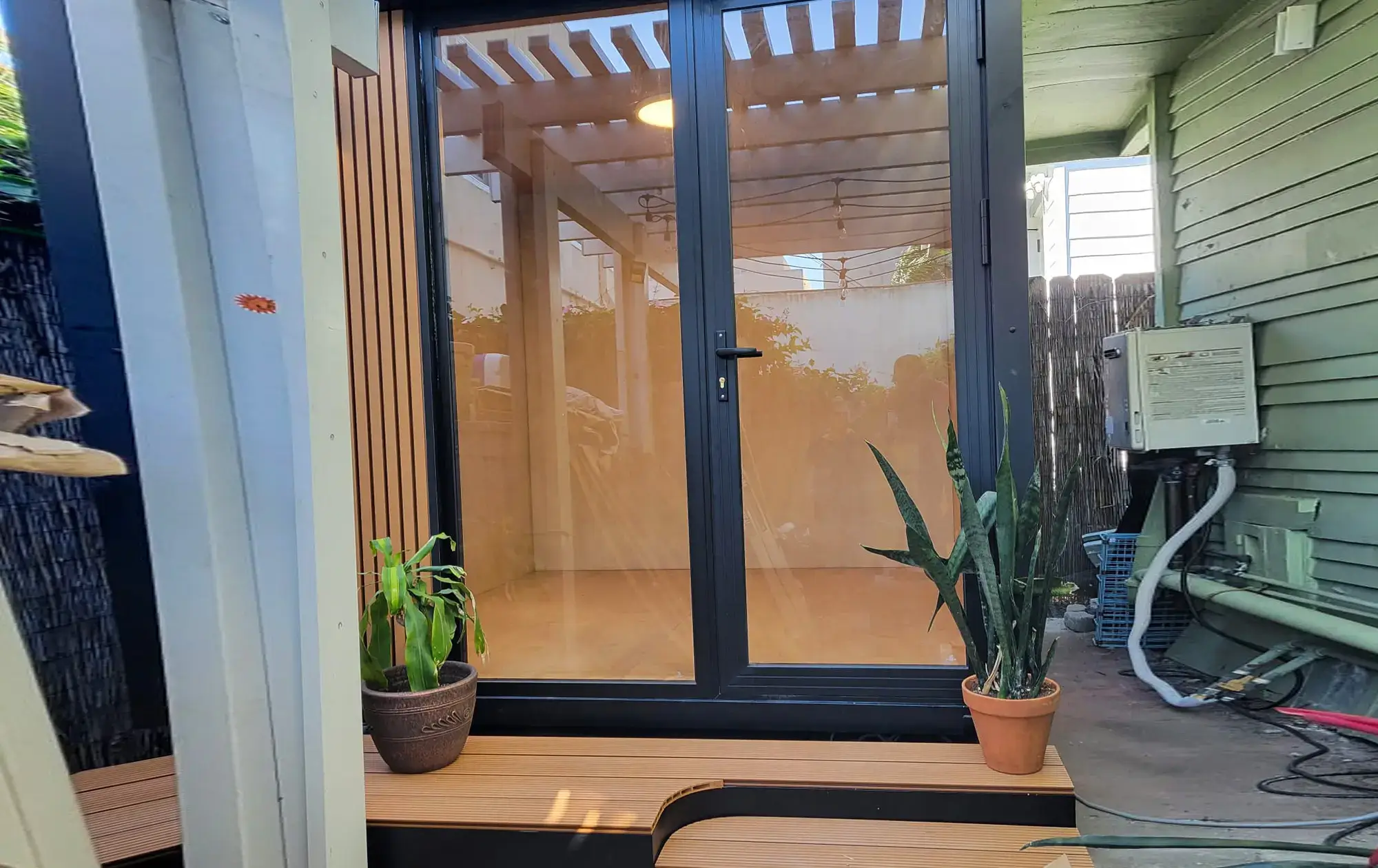
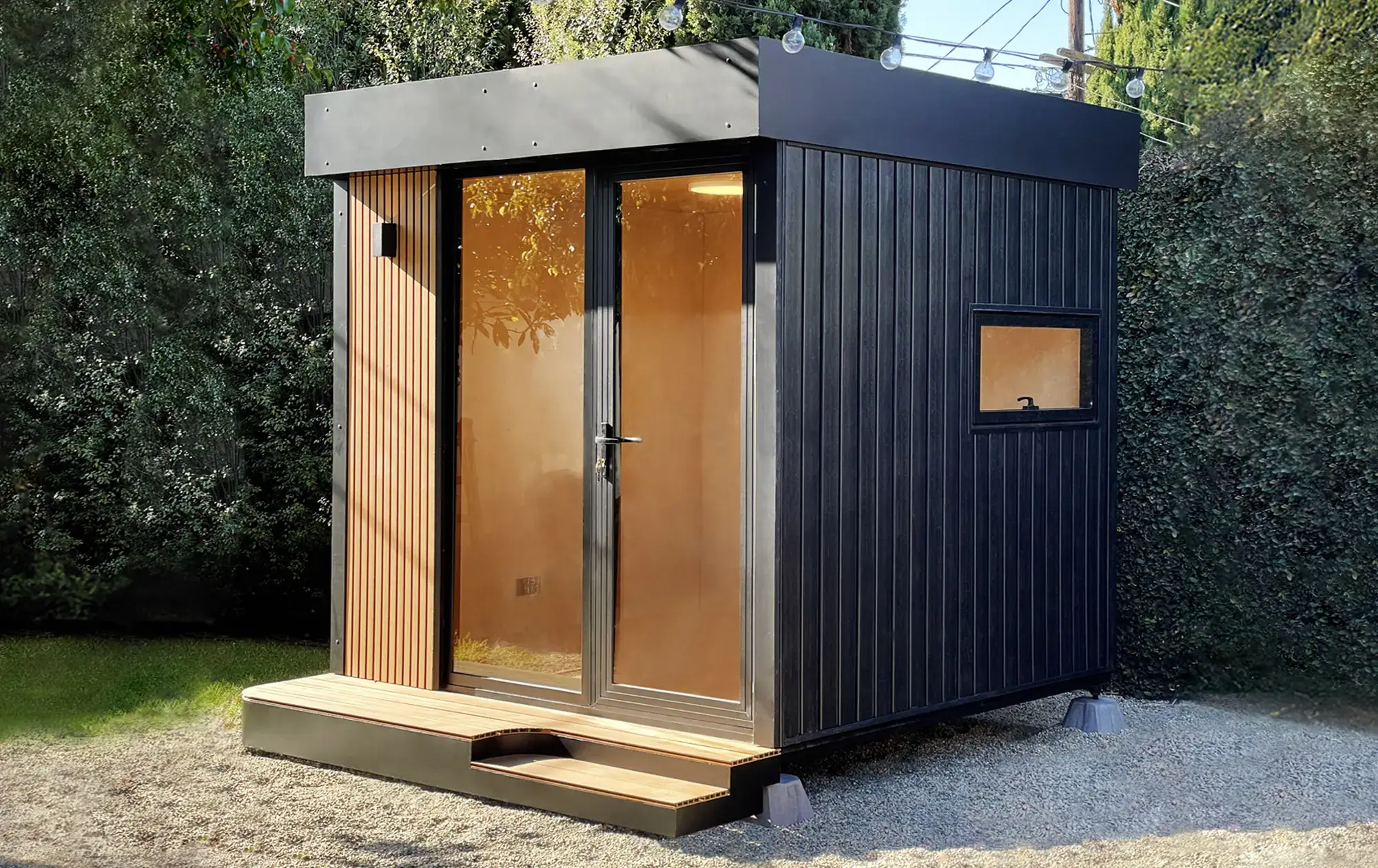
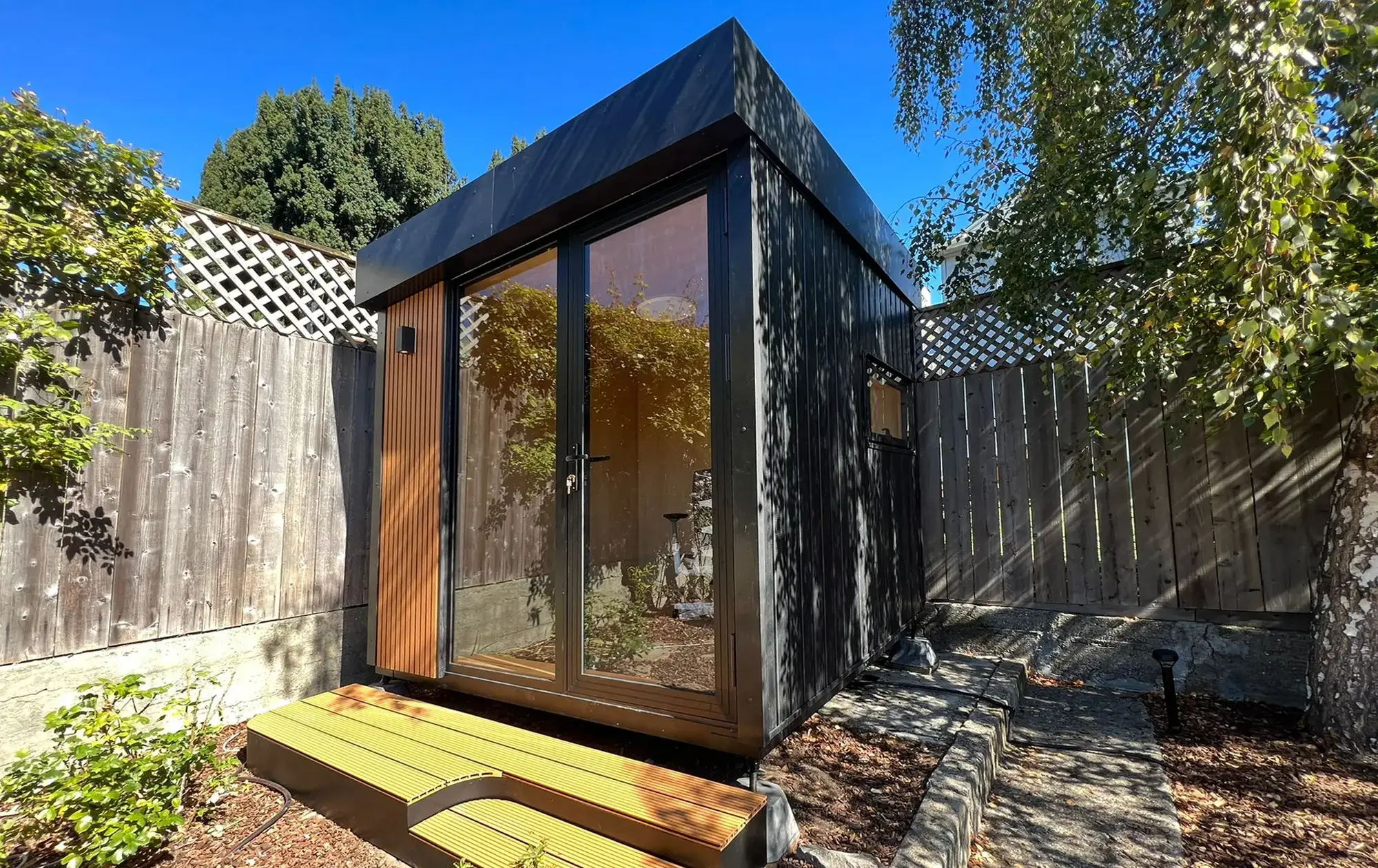


/https://storage.googleapis.com/s3-autonomous-upgrade-3/production/ecm/230914/bulk-order-sep-2023-720x1200-CTA-min.jpg)

/https://storage.googleapis.com/s3-autonomous-upgrade-3/production/ecm/230824/image_78sctd8d_1692158325567_raw-80639991-bedf-4e11-a77c-1c8e0a351b40.jpg)